 It’s not often that you hear the words “awful” and “supercar” in the same sentence. Actually, finding the word “awful” to describe a “supercar” is about as rare as finding someone who actually likes the repugnance of a Pontiac Aztek.
It’s not often that you hear the words “awful” and “supercar” in the same sentence. Actually, finding the word “awful” to describe a “supercar” is about as rare as finding someone who actually likes the repugnance of a Pontiac Aztek.And it’s no wonder why, when purchasing a $200,000 automobile, the last thing you obviously expect is for it to be awful. But of course, there are those exceptions; those exceptions which manage to slip through the factory gates without a shred of engineering excellence - a dud, a lemon if you will.
Thankfully, there are few of these wallet-crushers which could be described as being awful, but I’ve got one for you – there is no supercar as awful as the Aston Martin Vanquish. Here and now, we’ll take a look at what made the Vanquish so awful; its tribulations, its downfalls, its cost-saving operations.
After a some-ten-year life-time span of Aston’s flagship, the DB7, the time eventually came when with the help of Ford Motor Co. It was time to release a new vehicle. Something which would be able to compete with the average 21st century supercar; something which would have the brute power, the technology and the style to make it a true thoroughbred. Trouble is, the Vanquish was (and has) never been anything like that. And despite its bold name – which means to “annihilate or “forcibly subdue” – the Vanquish did quite just the opposite. It was never daring, never class-leading and seriously compromised because of Aston’s cash flow at the time.
The first of many problems was the styling, which as it was often criticized for being overly adventurous for an Aston. Designed by Ian Callum, designer of the DB7 and the new Jaguar XK, the Vanquish (apparently inspired by the DB4GT Zagato) was not smooth like the DB7, but more blatant – more aggressive, flashier. Of course, this is subjective and not a real problem per se, but this was an often-stated criticism of the Vanquish. Personally though, I could never concur. I always thought the Vanquish was always a great looking car - perhaps not as finely stated as the DB7, but still interesting and modern without alienating Aston Martin’s classical design philosophy.


Exterior preferences aside though, the Vanquish’s first of many downfalls was always its interior. Those who had previously been acquainted with Aston’s had come to know and love their rich and vicarious all-English thematic styling elements - the affluent and over polished woods, the hand stitched leather and well, the 20th century cabin architecture. And though such specific traits were often criticism of such vehicles as the DB7 and the Virage, it ultimately made them Astons. That’s what Aston’s were, until the Vanquish arrived.
Unlike previous Aston Martins which were really like stepping into a 19th century drawing room, engineers and designers had tried – with their limited resources – to make the Vanquish interior luxurious, as well as modern. Unfortunately, the results didn’t pan out as one had hoped. With the Vanquish there was no rich woods to be found, oh no, just a sculpted console supposedly formed with aluminium, or so they say. Instead of being classical Aston, the Vanquish’s interior was always a sub-par item; not good looking, nor well built. The centre console being the worst example with its vast array of Ford parts bin pieces – cheesy and tactless buttons, awful air vents, and an audio and climate system obviously borrowed from that of a much lesser automobile. So, the approximately $200,000 Aston Martin was noticeably shabby. Suffice to say, such was not expected from a marquee of such high stature.
Amazingly though, that’s not even the Vanquish’s real vice. The biggest of downfalls with the Vanquish was undoubtedly with its mechanicals. Like the engine for instance, which was essentially two Ford Mondeo Six’s lashed together. Though that’s not the real issue here, the real issue was the fact that the engine had 450bhp and some 400lb-ft of torque. Respectable figures at the time of its release, but it looks as it was all a little too late. The same year Aston released the Vanquish, Ferrari released an updated version of Maranello, the 575M. With a price tag near identical to the big Aston and an engine featuring 520bhp and 414lb-ft of torque, the Vanquish looked to be living in the stone-age. Mind you, that’s without even mentioning the 6.2 litre 580bhp Lamborghini Murcielago with a price tag also near identical to the Aston. So, pretty much from its release the Aston was over-priced, underpowered and cheaply assembled.
As a result, its straight line performance was always mostly inadequate. With an average 0-100 km/h (62 mph) sprint between 5.0 and 5.5 seconds, the Vanquish just wasn’t matching its similarly-priced competition, let alone a $90,000 Mercedes-Benz SL55. Also contributing to poor acceleration was a gargantuan kerbweight and what is arguably the worst sequential transmission ever built; the latter being the greatest criticism of the Vanquish. The first and foremost trouble was that the Magneti Marelli system featured no automatic mode like that of a DB9, or a Ferrari 599 GTB Fiorano. In the Vanquish, the only way to change gears was with the paddles and even that would be ok if they had just worked properly. All throughout the Vanquish’s life the transmission was always an unbelievable afterthought; it didn’t respond quickly to gear changes - often delaying upwards of two seconds. It was jerky, noisy and above all else, faulty.


Now, I know what exactly you’re thinking – “well, performance isn’t everything, how about the general driving experience”?
Well, you’d think that after a cheaply assembled interior, a faulty transmission, mediocre performance and a large kerbweight not much else could be worse, but you’d be wrong. The brakes proved to be under-sized, inadequate and likely to starting fading after a few laps on the track. And the handling, oh boy, where do you we start? The true essence of an Aston has never demanded precise handling (making a nose-heavy Aston Martin go fast was always a muscular achievement), but with the Vanquish you would have expected some sort of advancement. This was untrue though – the car was sloppy, uncontrollable and over-sized. Simply put, it just couldn’t pull its weight through the corners. And so on and so forth, the Vanquish proved to be just a big lug with lousy footwork. But in 2004, the Vanquish faced its hardest competition yet; the company’s newly released DB9. Borrowing upon the Vanquish’s 12 cylinder motor and general styling theme –albeit closer to the DB7 - the DB9 did everything better than the Vanquish. It was just as powerful, it was a tad faster; it was better-handling and certainly much better built. It’s transmission… actually worked. In short, it was everything the Vanquish should have always been, and with a price tag undercutting the Vanquish by a lump sum of some $50,000, there was now little point in purchasing the flagship.
Aston made note of this immediately and in 2005, released the “Vanquish S”. What was an apparently reworked Vanquish though, was just a pin-up. Despite featuring a supposedly “reworked transmission”, it still changed gears like a 16 year old using a manual for the first time. And despite a 70bhp power increase, tests revealed the car to have straight line performance more or less identical to that of the first Vanquish. In fairness and thanks to a stiffened chassis, it was said to handle better than the first generation though.
So here we are, in 2007, looking back at the vast mistake which the Vanquish was. A $200k dud. A mistake, an afterthought – a car which never lived up to being called a supercar, let alone an “Aston Martin”. Thankfully, the big Aston is no longer wasting factory space as it’s been discontinued, and rightly so. Long live the new DBS.
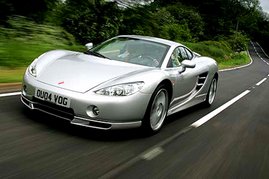
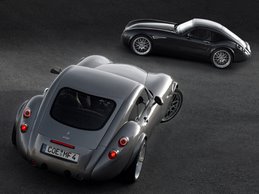
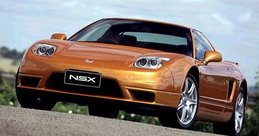
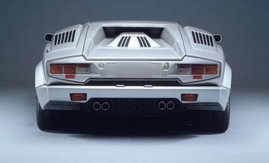

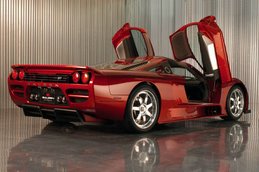

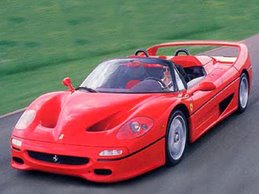

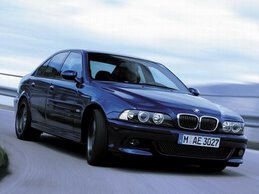



No comments:
Post a Comment